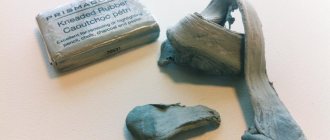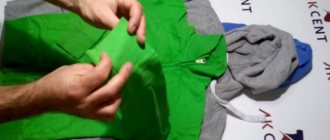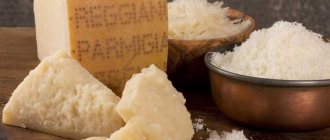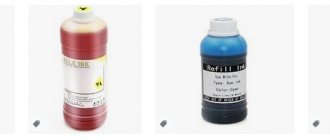We remove the prickliness of wool: how and what to wash it with, freeze the product, and dry it properly.
With the arrival of cold weather, woolen items are probably the most beloved in the wardrobe of all our compatriots. Indeed, a good woolen item is thin, light, and at the same time very warm. Only fleece items can compete with them, but due to the specific visual appearance, fleece is used for sewing sports lines, which is not suitable for everyone.
In this article we will tell you how to care for woolen items so that when worn they do not cause discomfort or tingling (a natural characteristic of wool, even merino).
Why is the sweater scratchy?
The fact that a sweater itches is natural: animal hair is the same as human hair. If the ends of the hair are split, then a kind of brush of hairs is formed in this place. In wool, irritation to the skin is ensured by precisely this structure of the pile. Any skin is sensitive to tingling, children especially suffer from this. That is why it is recommended from the very first days of life to use soft acrylic or wool from a special line adapted for such products for children's clothes .
Read also: Nootropics (nootropic drugs)
Why is the sweater scratchy?
The fact that a sweater itches is natural: animal hair is the same as human hair. If the ends of the hair are split, then a kind of brush of hairs is formed in this place. In wool, irritation to the skin is ensured by precisely this structure of the pile. Any skin is sensitive to tingling, children especially suffer from this. That is why it is recommended from the very first days of life to use soft acrylic or wool from a special line adapted for such products for children's clothes .
Bandage
How to make a knitted item soft? A knitted scratchy sweater can be tied up:
- Start unraveling it, moving from the neck.
- Once all the threads have been unraveled, they may take on a wavy appearance. To solve this problem and straighten them, steam them. This can be done with an iron, a special device - a steamer, or you can simply hold it over boiling water.
- After this, arm yourself with a crochet hook, as well as cotton or silk threads, and begin bandaging.
Is all the wool itchy?
Products made from 100% wool usually have strong scratchiness. This is usually camel or sheep wool. Hand-knitted items are often endowed with this unpleasant property compared to industrially produced products. When choosing a wool sweater, you should feel it thoroughly and make sure there are no protruding hairs. The softest products are those made from mohair, cashmere, angora, and alpaca. The impurities also make wool items more comfortable to wear.
How to get rid of prickly yarn
I froze it too. did not help
| Gelenka My experience shows that nothing helps. Rinsing in conditioners softens it somewhat, but does not remove the prickliness. Someone on the forum once wrote that upon careful examination, it turned out that there were hard hairs sticking out in the thread, and they were pricking. And she removed these hairs with tweezers. After that it became much better. Your cardigan appears to be quite thick. It is unlikely that you will wear it on your naked body. Wear something tight. | |
| Tanya 78 Hem the lining. You are unlikely to change the properties of wool in the finished product much. | |
| Bobik | |
| soleka Hello. Tell me what to knit a summer coat from: yarn with a small amount of wool or cotton? I plan to wear it with jeans and a top (or T-shirt) | |
| Bobik It’s not very clear what the essence of the question is. You are afraid that the yarn with wool will make it scratchy. Or. What? In general, it is difficult to give definite advice without knowing which model we are talking about. | |
| soleka I wonder if it will be hot in wool in the summer? This is the model: I’m starting to knit a summer openwork coat. Who's with me? =) If it’s cotton, then I also think about Begonia (YanArt) or something from Vita | |
The main rules for maintaining the softness of the product
In order to avoid unpleasant sensations while wearing a sweater, it is recommended to follow the following simple rules that will help maintain the softness of the pile:
- When cleaning these products, it is advisable to always use conditioner designed for washing wool items;
- try to avoid washing at high temperatures and at high spin speeds of the washing machine;
- the dryer also contributes to the loss of softness and elasticity of the material , so it is recommended to use such a machine only in cases of extreme necessity;
- drying near radiators, near heating devices or direct sunlight can make the item hard and prickly;
- too frequent washing, especially by machine , negatively affects the condition of the material and its softness;
- Use soft water to wash this item;
- When purchasing a product made from thick and bulky yarn, it is advisable to try it on , making sure that the material will be pleasant to the body and will not cause itching or irritation.
Sheep wool, in turn, is the most “biting” material, which may not be too soft to the body.
Powder for woolen items
You can make wool clothes soft by using a special powder and fabric softener. The most common of them are Laska and Lenore. It is better to purchase the liquid version of the product, it works better on the fabric and does not leave streaks.
You can use special softeners for washing machines and for hand washing; you need to choose a method based on the recommendations on the tag. During hand washing, the fabric deteriorates less and the risk of distortion is reduced.
Conditioner and powder soften the fabric, fixing the lint that has come out tightly to the thread itself. The effect of the product is not long-lasting, but it tends to accumulate. With each wash the item will become a little softer.
Effective methods for eliminating scratchiness and softening wool products: step-by-step instructions
You can make wearing your favorite warm product comfortable and enjoyable, freeing it from excessive rigidity and “bitingness,” using various means that, as a rule, can be found in any housewife’s home.
Methods for softening an object at home are simple and safe: if used correctly and in compliance with all proportions, they will not harm the material and will not change the color of even snow-white things.
Lemon juice is very effective at softening the material, making it more elastic and less rigid. To implement this method, you will need several lemons, gauze cloth and a steaming iron or just a steamer:
- lay out and carefully straighten the product on a horizontal surface;
- squeeze the juice from a couple of lemons and moisten a gauze cloth with the resulting liquid;
- cover the product with a gauze cloth soaked in lemon juice and leave for 30 minutes;
- After half an hour, steam the item using a steam generator.
Glycerin, which can be found in any pharmacy, is considered one of the most effective means for softening tissue stiffness:
Dishwashing liquid
Dishwashing detergent has a fairly wide range of actions, including eliminating the “biting” of woolen material:
- wet the item with warm water , making sure that there is not a single dry area left;
- take a small amount of dishwashing liquid and whip up foam . The exact amount of liquid depends on the size of the item. For average items, a couple of handfuls of detergent are usually enough;
- cover the entire product with foam , thoroughly soaping it on all sides;
- leave the item for 1.5-2 hours , then rinse thoroughly with cool water.
Mustard powder
Mustard powder, which dissolves in water, can be successfully used for this purpose. This method is suitable for softening even the toughest and prickly wool items:
- dilute 3-4 tablespoons of powdered mustard in warm water , stirring the liquid thoroughly;
- place the “biting” thing in a container with mustard mixture for two hours;
- rinse the item until the mustard composition is completely washed away , then dry it horizontally on a towel.
By exposure to cold temperature
Cold has a positive effect on wool fibers, making them smoother and, as a result, soft and manageable. In addition, this method is the simplest and does not require anything other than providing a cold temperature for 10-12 hours:
- put the item in the freezer of the refrigerator overnight or leave it in the snow on an open loggia, balcony or in the courtyard of the house. Cold air will eliminate hardness and make the product pleasant to the body;
- after 10-12 hours, the item should be brought into a warm place, carefully straightening out all areas , and hung on a hanger.
Shampoo
Hair shampoo will not only help to carefully clean the item of dirt, but also restore its pleasant softness. For light and snow-white products, it is recommended to choose colorless shampoos:
- gently wash the product in warm water with shampoo , being careful not to stretch or injure the material;
- rinse the item in cool water and dry away from direct sunlight and heaters.
It is advisable to choose a shampoo for children or natural and ecological, without aggressive chemical components in the composition.
How to make a woolen sweater, jacket, dress soft and not scratchy?
Another option goes well with clothes. To do this you will need vinegar and regular salt without additives. So: add 5 tablespoons of salt to 5 liters of warm water and dissolve completely. Add 5 tablespoons of vinegar or citric acid solution (a teaspoon per liter of water) and dip the item after washing in regular powder. Leave for 2-3 hours and then rinse.
If it is not summer and the item is not allowed to dry in a well-ventilated area, the smell of vinegar will remain in the item until the next wash.
Glycerin will help remove the prickly fur.
In this case, there is another way:
- 1 liter of water;
- 1 teaspoon glycerin.
Soak for no more than 30 minutes, rinse thoroughly.
Glycerin is sold in pharmacies without a prescription, but if it’s not available since our grandmothers’ stockpiles, it’s easier to buy special supplies.
Mustard powder
This method, which makes it possible to make things less prickly, was used by our grandmothers long before the invention of special powders. Mustard softens the fibers, and the material becomes noticeably softer and more pleasant to the touch.
Using mustard powder to soften wool is very simple. Add 2 tbsp. l. mustard into a bowl of warm water and place the woolen product there. Leave it in the solution for an hour, then rinse thoroughly. Drain the mustard solution and rinse the clothes thoroughly. Squeeze lightly and set aside to dry.
Can a scratchy sweater be softened in the freezer?
Those who studied physics well at school know that water expands at subzero temperatures and contracts at positive temperatures. Thanks to this feature, many centuries ago, women discovered that it is best to wash down and wool items in winter, as they become softer, more delicate and do not itch at all, as if they were washed in the warm season.
Can a scratchy sweater be softened in the freezer?
So, detailed instructions on how to make any woolen or downy item soft using frost or a freezer:
- We wash and rinse using any of the methods described above;
- We throw it onto the net and let the water drain, but the fabric itself should remain damp;
- Place the item in a bag and place it in the freezer or in the cold for several hours;
- Take it out and let it defrost completely, shake it and lay it out on a horizontal surface to dry. Shake during drying to help fluff up the fabric.
Exposure to cold temperatures
Perhaps the most original way to make wool not prickly, but soft, is to expose it to cold temperatures, in other words, to freeze it. With this method, the lint on the thread freezes and falls off, so the clothes become softer.
Since in city apartments you can’t hang things out the window, unless on an unglazed balcony, and winter is not eternal, a freezer is usually used for this method. In addition to the freezer, we will need a plastic bag.
Place the damp woolen item in a bag and place it in the freezer for a day. After taking out the product, let it defrost, then rinse it in cool water. It is better to rinse with the addition of fabric softeners presented here.
Unfortunately, all of the above methods are only suitable for slightly itchy wool. If the material itches a lot, then there is nothing you can do about it, all you have to do is endure it or wear something softer under the bottom of your woolen clothes. Therefore, if you want to purchase something made of wool, carefully look at the composition, the manufacturer, and don’t forget to touch it (it’s best to touch it to your face).
It is worth remembering that the prickliest wool is sheep's wool. As a rule, hand knitting is more rigid than industrial knitting. When purchasing, it is better to choose products not made from 100% wool, but with impurities.
What can I do to prevent my sweater from itching?
With the onset of cold weather, much needed and warm woolen items are taken out of the closet. Here it is, my favorite sweater. Very beautiful, but prickly. The only thing that saves you is wearing a turtleneck with a high neck underneath. Don't worry about it - everything can be fixed. We will share with you ways that will help remove tingling hair fibers.
All these methods will not require any special costs: neither material nor physical. To eliminate the causticity, it is enough to use some tricks when washing.
The down scarf is itching: what to do, how to fix it?
A down scarf is a very delicate thing and requires proper care. Depending on the color, thickness and even type of wool yarn, you should wash and dry it in different ways. Read more about caring for woolen scarves, including the famous Orenburg scarf, in our article at the link.
The down scarf is itching: what to do, how to fix it?











